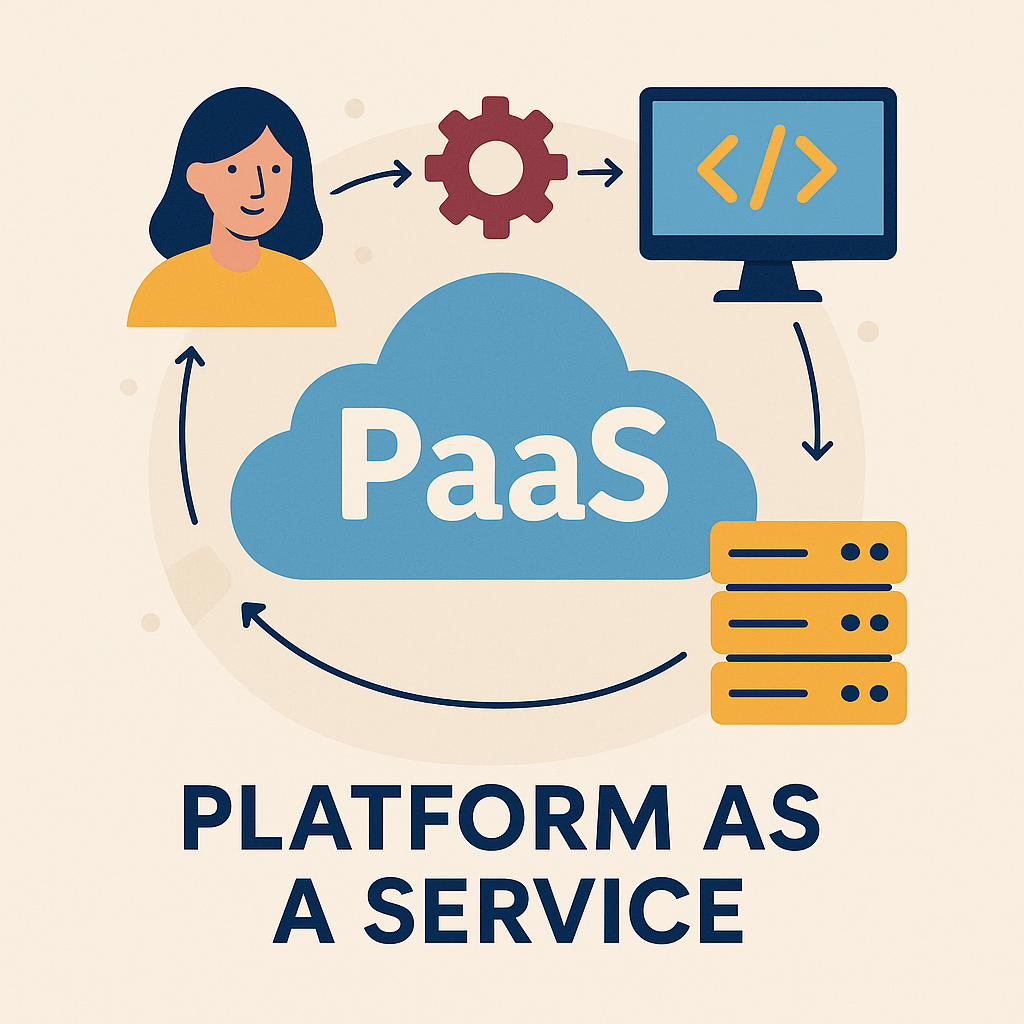The global Platform as a Service (PaaS) market Size is undergoing rapid evolution, positioning itself as a cornerstone in the cloud computing ecosystem. PaaS provides a cloud environment in which developers can build, test, and deploy applications without managing the underlying infrastructure. Offering a range of services including middleware, development tools, database management, and application hosting, PaaS simplifies the software development lifecycle. The global PaaS market, valued at USD 81.30 billion in 2023, is projected to soar to USD 283 billion by 2030, growing at an impressive CAGR of 20.22% during the forecast period.
PaaS bridges the gap between Infrastructure as a Service (IaaS) and Software as a Service (SaaS), offering developers a structured and scalable environment. Its core value lies in enabling companies to innovate rapidly while reducing costs, enhancing collaboration, and improving time-to-market for new applications.
Get Sample Copy of The Report : https://www.maximizemarketresearch.com/request-sample/62017/
Market Growth Drivers and Opportunities
Several dynamic forces are propelling the growth of the PaaS market globally:
- Integration Capabilities: One of the key drivers is the seamless integration of PaaS platforms with a variety of services, APIs, and external tools. This flexibility allows businesses to adapt solutions without significant re-engineering, significantly enriching functionality and user experience.
- Expansion of Ecosystem: As more developers, services, and tools join the PaaS ecosystem, network effects amplify, attracting a broader user base. This cycle of growth continually increases the platform’s value and appeal.
- Serverless Computing Adoption: Trends such as serverless computing are gaining momentum within PaaS frameworks. Serverless models optimize costs by charging users based on actual resource consumption rather than fixed capacity, eliminating idle resource costs and enhancing scalability.
- Reduced Operational Burden: PaaS solutions minimize infrastructure maintenance tasks like server patching, scaling, and monitoring, allowing developers to concentrate on core application logic and innovation.
- Microservices and Event-Driven Architecture: Modern applications are increasingly built using microservices and event-driven approaches, both of which align perfectly with PaaS offerings, enabling more agile and modular application development.
Despite the promising outlook, vendor lock-in remains a significant restraint. Companies dependent on proprietary technologies from specific PaaS providers may face challenges when attempting to migrate or diversify their platforms, thereby hindering flexibility.
Segmentation Analysis
According to the report:
- By Type:
- Vertical Development PaaS (dPaaS)
- Database PaaS (dbPaaS)
- Integration PaaS (iPaaS)
- IoT PaaS (Internet of Things)
Each type addresses specific needs across different industries and technical requirements, allowing for customized development environments that enhance business agility.
- By Deployment:
- Public Cloud
- Private Cloud
- Hybrid Cloud
Public cloud deployment dominates the market due to cost-effectiveness and scalability, but private and hybrid models are gaining ground, particularly in sectors where security and compliance are critical.
- By Organization Size:
- Small and Medium Enterprises (SMEs)
- Large Enterprises
Large enterprises currently account for the larger share, but SMEs are increasingly adopting PaaS to streamline their application development processes and compete effectively with bigger players.
- By Vertical:
- Banking, Financial Services, and Insurance (BFSI)
- IT and Telecom
- Retail and Consumer Goods
- Healthcare and Life Sciences
- Government and Public Sector
- Others
BFSI and IT & Telecom sectors are leading adopters, leveraging PaaS for customer-facing applications and internal efficiencies.
Country-Level Analysis: USA and Germany
- United States: The U.S. leads the global PaaS market due to its advanced IT infrastructure, robust digital ecosystem, and a culture of rapid innovation. Major technology companies like Amazon Web Services (AWS), Microsoft Azure, Google Cloud Platform, and IBM Cloud dominate the landscape. American enterprises across BFSI, healthcare, and e-commerce are heavily investing in PaaS solutions to accelerate digital transformation initiatives, particularly in the wake of remote work trends and cloud-first strategies.
- Germany: As Europe’s largest economy, Germany is emerging as a key player in the PaaS market. Driven by strong manufacturing, automotive, and industrial sectors undergoing Industry 4.0 transformations, German companies are adopting PaaS solutions to modernize operations and build smart factories. The government’s push toward digitization through initiatives like “Industrie 4.0” further catalyzes adoption. Data sovereignty and compliance with GDPR regulations also drive the preference for hybrid cloud PaaS models.
Commutator Analysis
The PaaS market is characterized by intense competition, with major players investing heavily in technological advancements, ecosystem expansion, and strategic partnerships to strengthen their market positions.
- Amazon Web Services (AWS) continues to innovate with Elastic Beanstalk and Lambda services, offering flexible solutions for a range of applications.
- Microsoft Azure maintains a strong competitive edge with Azure App Service, combining robust integration capabilities with enterprise-grade security.
- Google Cloud Platform (GCP) emphasizes open-source collaboration and AI-driven services, setting itself apart with Kubernetes, TensorFlow, and other innovative tools.
- IBM Cloud Foundry targets enterprise-grade applications with a focus on AI integration and data analytics.
- Oracle Cloud Infrastructure (OCI) is gaining traction, especially among existing Oracle database customers looking for smooth migration paths to the cloud.
Startups and niche players also contribute by offering specialized solutions tailored to industry-specific needs such as healthcare, fintech, and IoT.
The growing trend of multi-cloud strategies among enterprises means that vendors offering strong interoperability, flexibility, and cost-effective solutions are better positioned to capture significant market share.
To view Full Report : https://www.maximizemarketresearch.com/market-report/global-platform-as-a-service-paas-market/62017/
The global Platform as a Service (PaaS) market is on a robust growth trajectory, empowered by integration capabilities, expanding ecosystems, and evolving cloud strategies. The proliferation of serverless architectures and microservices-based development is reshaping the landscape, offering opportunities for players to innovate and capture new markets.
Despite challenges like vendor lock-in and compliance concerns, the overwhelming benefits of agility, cost savings, and enhanced collaboration continue to drive PaaS adoption. As businesses worldwide strive to accelerate digital transformation, PaaS is no longer a luxury but a strategic necessity.
The future of PaaS promises heightened innovation, deeper ecosystem collaborations, and a broader array of offerings, ensuring its pivotal role in the next generation of cloud-driven enterprises.



